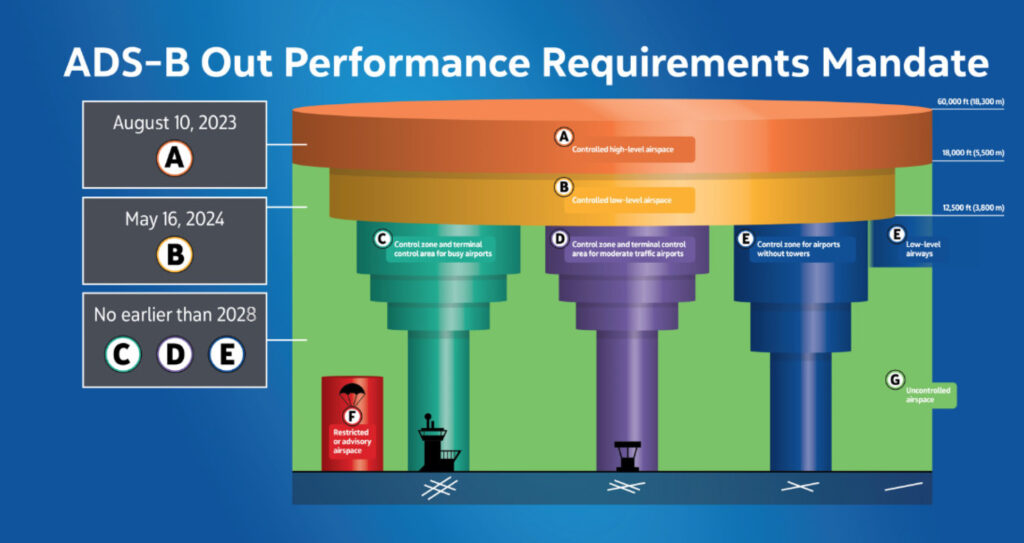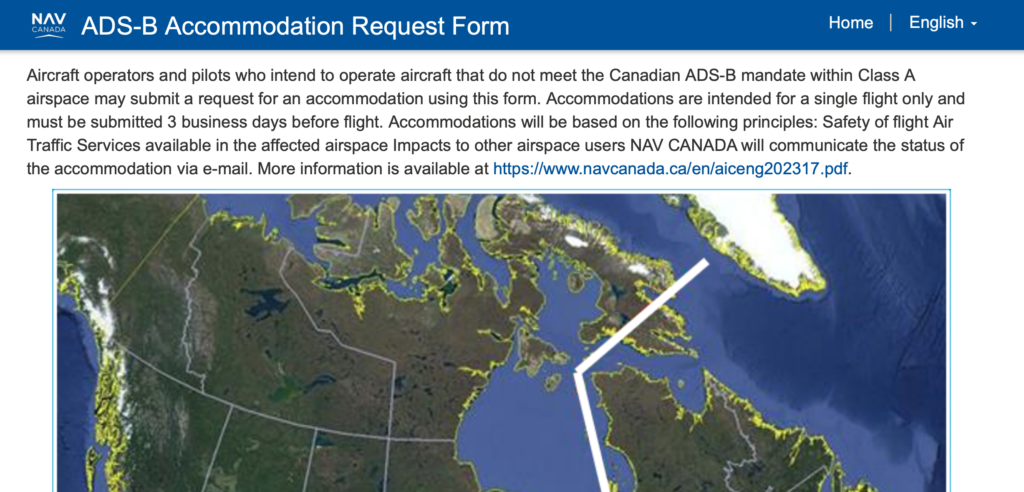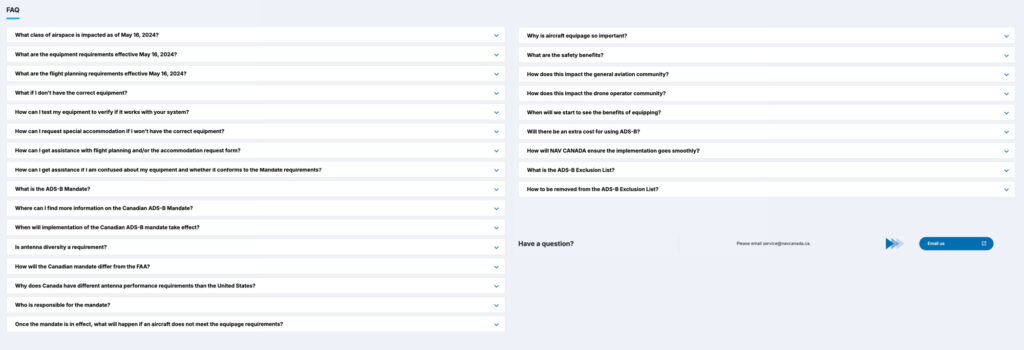Key Points
- ADS-B became mandatory in Canadian Class A airspace in Aug 2023 (above FL180). It then became mandatory in Class B airspace (above FL125) in May 2024. Mandates in any Class C, D and E airspace will be determined no sooner than 2028.
- You need an antenna able to broadcast to ADS-B receivers both on the ground and in space, and you need to include some extra stuff on your flight plan.
- If you don’t have ADS-B, you have to apply for an exemption online from NavCanada.

What equipment do I need?
- A transponder with ADS-B out capability that meet the minimum performance standards (or better) found in this fancy document. This needs to be attached to an antenna that can broadcast to ADS-B receivers both on the ground, and in space.
- You can also find more on this in section 551.103 of the Canadian Aviation Regulations.
Extra Flight Planning Requirements
- If you plan on entering airspace where the ADS-B mandate applies, there is some extra stuff you need to include in item 10b of your ICAO flight plan (assuming you have all the right gear on board).
- Use the code B1 if you have ADS-B Out only, or B2 if you have ADS-B In and Out.
- You’ll also need to include SUR/CANMANDATE in item 18.
- One other gotcha – make sure the flight identification (flight number or aircraft reg) broadcast by your ADS-B equipment exactly matches the one used in item 7 of your flight plan. Lest there be trouble down the track!
My ride doesn’t have this fanciness. What are my options?
- NavCanada will do their best to accommodate aircraft who don’t have the right gear on board, in the same way they’ll work to fit non-transponder equipped aircraft into transponder mandatory airspace.
- They’ll assess each application on a first-come, first-served basis. It takes time to figure out behind the scenes, and so you’ll need to ask at least three business days before your flight.
- There may also be suggested re-routes to make your request possible, along with special comments to include in Item 18 of your flight plan.
- You can apply for an exemption online, here. If you have a number of flights to operate, you can also submit a blanket request via service@navcanada.ca.

To enter mandated airspace without ADS-B, you’ll need prior approval. Click the image above for that.
More Info
You can find that in the Canadian AIP (ENR 1.6.3), or even better – this page from NavCanada dedicated to the ADS-B Mandate. This includes a fairly extensive FAQ section at the bottom.
More on the topic:
- More: US FAA Improves Flight Tracking Privacy
- More: ADS-B Controversy? Landing Fee Fuss in Florida
- More: Canada Airport Options Up North
- More: ADS-B Mandates in 2023
- More: Cloaking Devices: The ADS-B Privacy Issue
More reading:
- Latest: More face scans at the US border for BizAv flights
- Latest: Greenland NAT Alternates: Dec 2025 Update
- Latest: Mexico Customs Surprises: Pills, Vapes, and Laptop Rules
- Safe Airspace: Risk Database
- Weekly Ops Bulletin: Subscribe
- Membership plans: Why join OPSGROUP?












 Get the famous weekly
Get the famous weekly 






One requirement to add is that the aircraft needs to meet the DO-260B compliance standard listed in the Surveillance Field of item 18 (i.e. SUR/DO-260B). The older DO-260A compliance standard does not qualify in meeting this requirement.
The Canadian ADS-B Mandate is actually a Performance Mandate.
As mentioned, You need to have an antenna that has the ability to fire upwards and downwards or two separate antennas that accomplish this in order to qualify. Reason is that the whole point is to ensure that if you fly in airspace that does not have ADS-B coverage that you are able to send the ads-b signal to a satellite (via Space-Based ADS-B). ADS-B coverage is fairly limited past a certain point in the north of canada.
This NAVCanada link includes further information:
https://www.navcanada.ca/en/air-traffic/space-based-ads-b/ads-b-performance-requirements.aspx